CMOS sCMOS Image Sensor Market Summary
As per Market Research Future analysis, the CMOS and sCMOS Image Sensor Market Size was estimated at 23.76 USD Billion in 2024. The CMOS and sCMOS Image Sensor industry is projected to grow from 25.19 USD Billion in 2025 to 45.17 USD Billion by 2035, exhibiting a compound annual growth rate (CAGR) of 6.01% during the forecast period 2025 - 2035
Key Market Trends & Highlights
The CMOS and sCMOS image sensor market is poised for robust growth driven by technological advancements and increasing applications across various sectors.
- North America remains the largest market for CMOS and sCMOS image sensors, driven by high demand in consumer electronics and industrial automation.
- The Asia-Pacific region is the fastest-growing market, fueled by rapid advancements in automotive applications and security technologies.
- The Front-Side Illuminated (FSI) segment continues to dominate the market, while the Back-Side Illuminated (BSI) segment is experiencing the fastest growth due to its superior performance in low-light conditions.
- Key market drivers include the rising demand for high-resolution imaging and the expansion of automotive applications, which are significantly influencing market dynamics.
Market Size & Forecast
| 2024 Market Size | 23.76 (USD Billion) |
| 2035 Market Size | 45.17 (USD Billion) |
| CAGR (2025 - 2035) | 6.01% |
Major Players
Sony (JP), Samsung (KR), Canon (JP), OmniVision Technologies (US), ON Semiconductor (US), Teledyne e2v (GB), STMicroelectronics (FR), Panasonic (JP), Himax Technologies (TW)
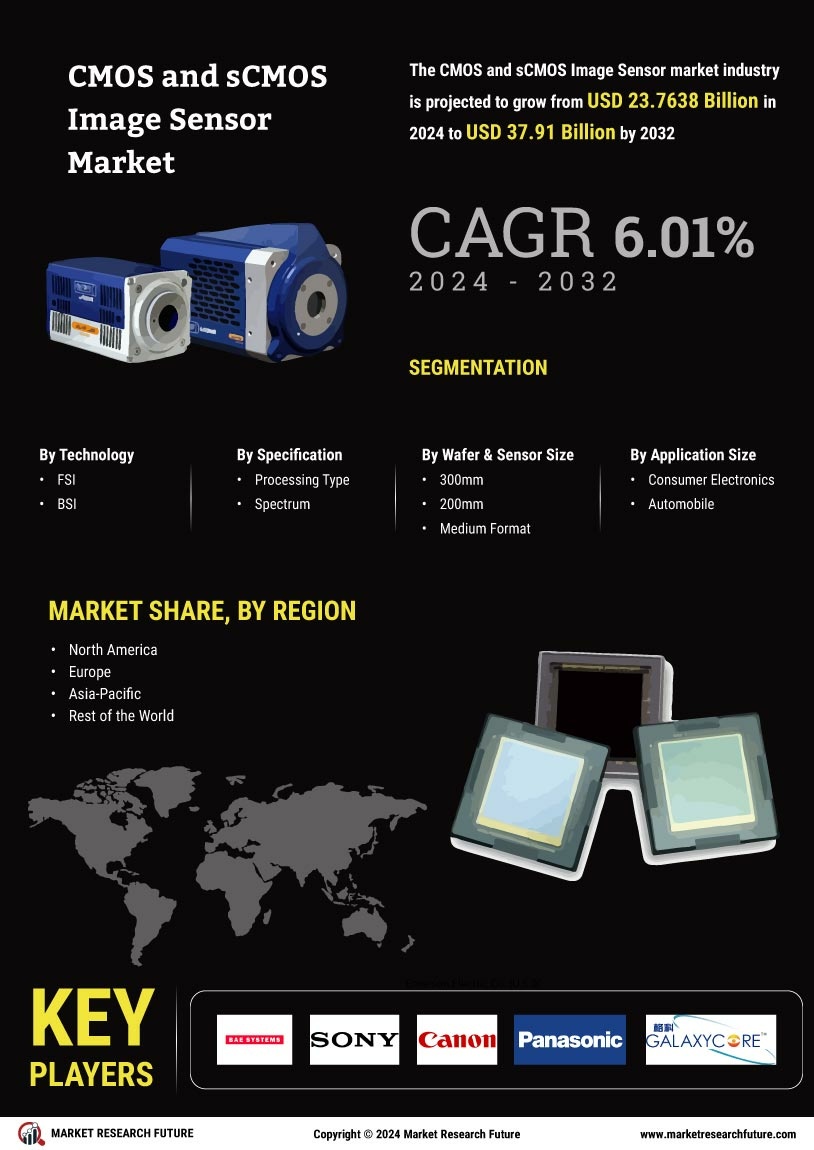
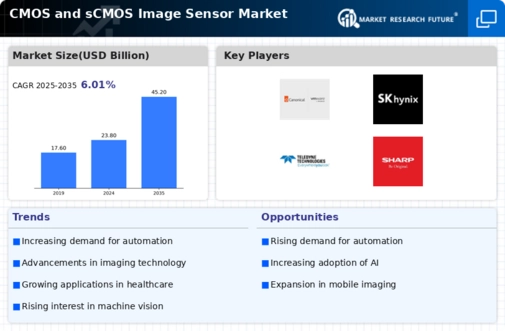
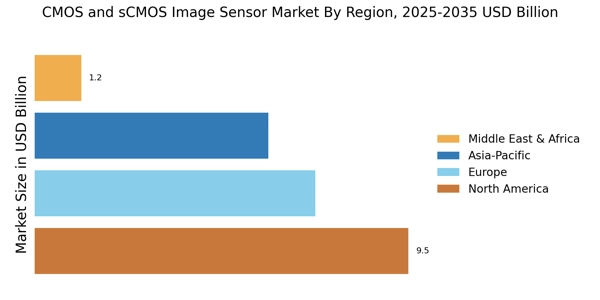

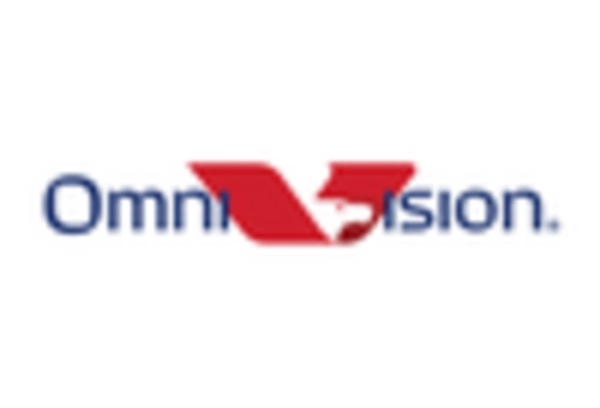
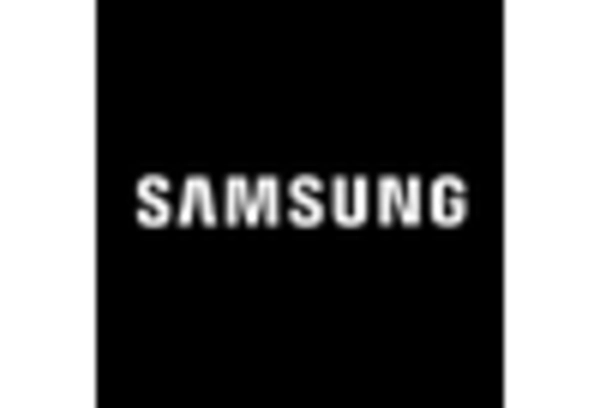
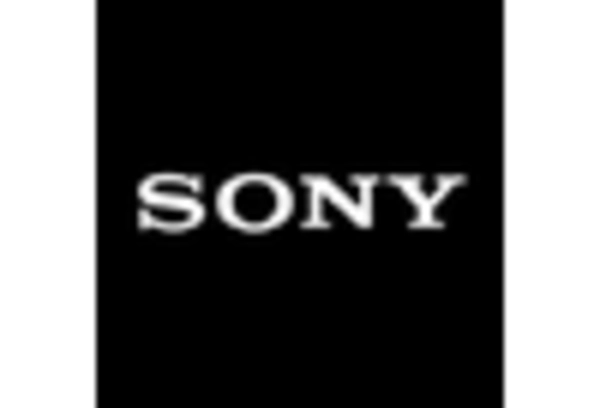









Leave a Comment